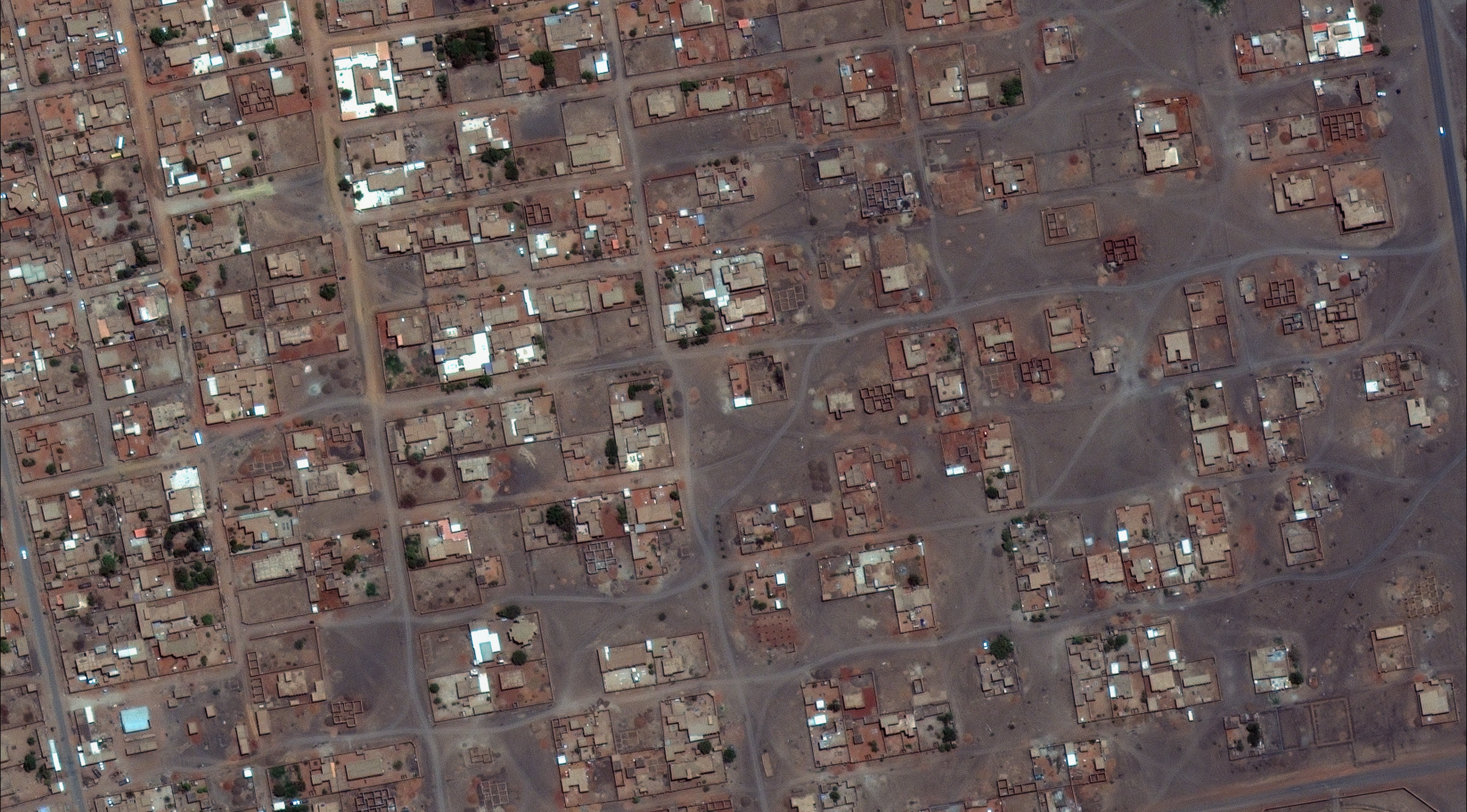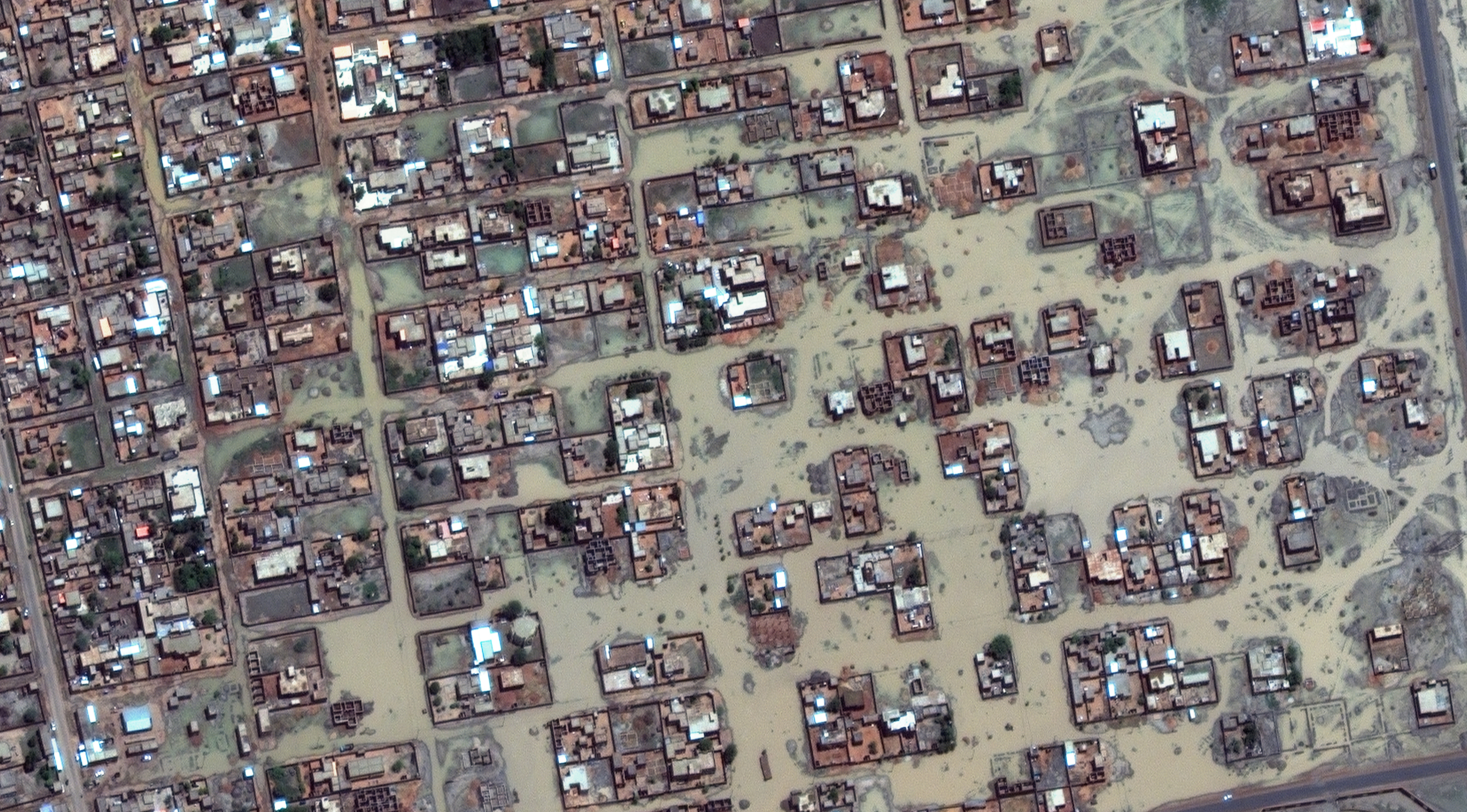In the past few weeks, heavy rainfall in Sudan has resulted in flooding in many areas of Khartoum and across the northern part of the country. August 11 DigitalGlobal satellite imagery secured by the Satellite Sentinel Project shows the sheer scale of the floods.

BEFORE: DigitalGlobe satellite imagery, June 7, 2013.

AFTER: DigitalGlobe satellite imagery, August 11, 2013
In Sudan’s capital city, the neighborhoods of East Nile, Khartoum, Karari and Ombadda have all been flooded. According to the United Nations, the floods, have already affected more than 84,000 in Khartoum state and 147,000 nationally (PDF). At least 47 villages in Al Gezeira state have been affected by flooding and the Sudanese Red Crescent Society reports that almost 10,000 people have been affected there. (PDF)
Some sources accuse pro-regime news sources of downplaying the real numbers and claim that over a hundred have been killed as a result of the floods. According to statistics collected by the newly-formed Nafeer campaign, the floods have resulted in at least 48 deaths and the destruction of 15,288 homes. Many have been made homeless. As the people of Sudan enter into the Eid celebration after the holy month of Ramadan many have found themselves under water.
Poor infrastructure and a lack of drainage mechanisms has worsened the flooding. Additionally, NGOs that typically help with disaster relief have been either shut down by national security forces or are struggling to operate with governmental restrictions on their activity. These limits make humanitarian services almost non-existent in impacted areas. The government’s Humanitarian Aid Commission, or HAC, which acts as a security organ issuing permissions for NGOS to operate, has been involved in a massive crackdown on NGOs. Service delivery organizations, especially foreign and foreign-funded NGOs, have been suspected and accused of being having a political agenda leading to their closure. The lack of government infrastructure or civil society to cater to those impacted by natural disasters has left a void in service delivery during the latest floods.
Sudan’s youth have been instrumental in filling this gap by creating an emergency relief initiative for those impacted. Thousands of youth volunteers formed a campaign named Nafeer, the Arabic term for rushing to work, to cater to the victims of the rain and floods
Nafeer Campaign which was established under the motto of “Filling the Gap and Doing What’s Supposed to be Done” is a youth-led campaign comprised of an estimated 1,500 youth volunteers. It is both an active on-the-ground movement as well as an online movement with Facebook and Twitter pages raising funds and support for the victims of the flood. The group has garnered over 35,453 likes on Facebook over the past few days. The youth movement has also set up a mobile clinic with a volunteer doctor and collaborated with pharmacies to set up a medication drive. They have collected and disseminated infant formula, mosquito nets, ready-made food, tents, and organized Iftars, the traditional sunset meal to break the Ramadan fast. Their work can be followed on Twitter under the hashtag #KhartoumSinking, reporting on the casualties of the rainfall and ways to help those affected.
The movement also extends across borders with volunteers raising funds from Sudanese in the diaspora through campaigns based in North America and the Middle East. A member of one of the volunteer committees of AlNafeer Campaign, explained to the Enough Project that the campaign is fully apolitical, and further adds that the volunteers are too “swamped with work” to point fingers or hold the government accountable. She further adds that they have only managed to cater to the needs of eight percent of the population to date.
Other Sudanese groups have been more vocal about their frustration with the lack of government response. Sudan Tribune reports that protests broke out in Omdurman’s Libya Market protesting the government’s inaction and inefficiency. Protestors were met with resistance from government forces. Some were arrested and detained, mirroring the government’s typical response to citizens peacefully raising their demands in Sudan. The protestors of Libya Market were not affiliated with Nafeer Campaign.
Sudanese citizens have been proactively taking matters in their own hands and spearheading disaster management and getting resources to those affected by the floods. They have become the agents of change and action in Sudan. When faced with such emergency situations, nothing gets in the way of Sudanese youth and their desire to help their local communities. This is the age of action. This is the age of the youth in Sudan.

